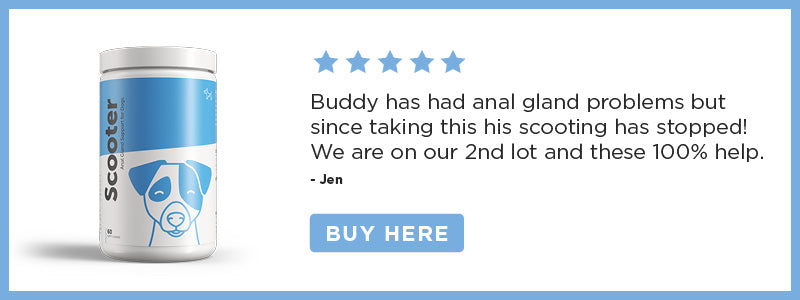Your basket is empty
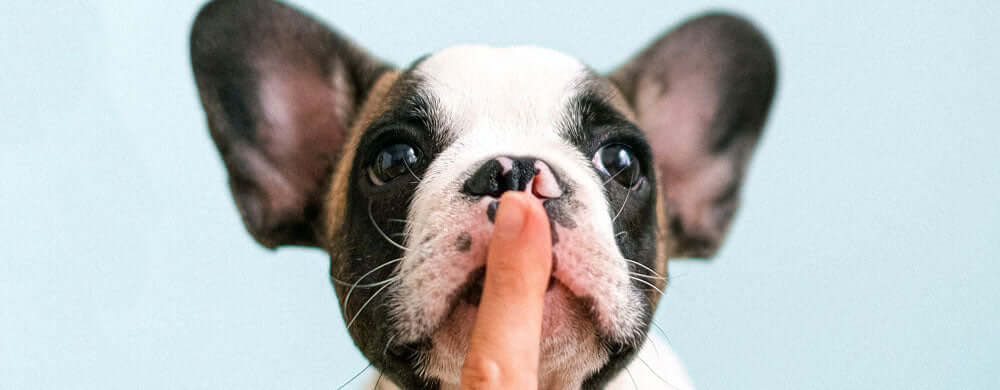
4 Natural Remedies for Dog Scooting
March 16, 2021 8 min read
Watching your dog scoot their bum along your cream-coloured carpet or favourite rug can be quite the horror show, especially if you’ve got guests over. However, your dog probably isn’t scooting to embarrass you in front of your friends and family.
So, why do dogs drag their bottom across the floor? Unless they’ve simply got an itch, dogs often scoot when they have an anal gland problem or are suffering from intestinal parasites, food allergies, or skin irritation.
❊❊❊
Why Is My Dog Scooting?
Catching your dog dragging their bottom across the floor isn’t the most pleasant sight to behold. You might assume they’re being a little cheeky or mischievous, but scooting behaviour usually indicates a problem.
There are a few reasons why your dog might be scooting, including impacted/clogged anal glands, intestinal parasites, skin irritation, food allergies, and anal furunculosis.
Anal Gland Problems |
One of the most common reasons why dogs scoot is due to blocked or impacted anal glands. This can happen if your dog is suffering from diarrhoea or loose stools, as soft or small bowel movements don’t provide adequate pressure to effectively empty the anal sacs. If the anal sacs fill without being emptied, then it can cause a lot of pain and discomfort. Dogs typically scoot with anal gland problems to try and get relief. If your dog’s anal glands are impacted, in addition to scooting, there will usually be a pungent fishy smell around their bottom. Your dog might also bite or lick around their rear due to soreness. Dogs suffering from impacted anal glands should be taken to see a vet as soon as possible. Vets will normally express the glands and prescribe antibiotics and pain relief medication. If left untreated, anal glands can become infected or abscessed. Abscessed glands are at risk of rupturing and may require surgery to repair. |
Intestinal Parasites |
Intestinal parasites such as tapeworms or roundworms can also cause dogs to scoot. Dogs can get tapeworms from consuming fleas that carry immature tapeworm larvae. Roundworms, on the other hand, can occur if your dog sniffs, licks, or eats roundworm eggs found in infected dogs’ faeces. The eggs can also be spread by animals like birds, rodents, earthworms, and cockroaches. Dogs with either tapeworms or roundworms display similar symptoms, including scooting, weight loss, diarrhoea, vomiting, bloating, and a dull coat. You may also notice visible evidence of worms in your dog’s stools, vomit, or around their anus. Tapeworms look like cucumber seeds or grains of rice, whereas roundworms look like white, long pieces of spaghetti. If you suspect your dog has intestinal parasites, take them to see a vet as soon as possible. Intestinal parasites are treated using a deworming medication, either given orally or by injection. |
Skin Irritation |
Scooting in dogs can sometimes be caused by a simple itch, but if it happens regularly, then skin irritation might be the culprit. Your dog might have matted fur or something stuck around their bottom, so look underneath their tail to check for anything that might be irritating them. Alternatively, if your dog has been recently groomed, they could have an itchy cut or razor burn from where they’ve been clipped. Sprays, perfumes, shampoo, or other grooming products might also be irritating your dog, especially if they have sensitive skin. If this is the case, then ask your groomer to change products to ones that are hypoallergenic or suitable for sensitive skin. |
Food Allergies |
If your dog is suffering from a food allergy or sensitivity, they might have diarrhoea or loose stools. Loose stools can cause anal sac issues, as well as scooting. Soft bowel movements can make it difficult for your dog to empty their anal sacs properly, so a change in diet might be in order. A diet that is low in protein, fibre, or is high in filler foods (like corn, soy, grains, and rice) can cause watery stools and other issues. Soy, dairy, wheat, eggs, chicken, and beef are some of the most common allergens in dogs. Your dog could be allergic to one or more of these foods if they frequently have digestive problems. Speak to your vet if you think your dog has a food allergy as they will be able to assist you with dietary changes. Don’t make any drastic adjustments to your dog’s diet without speaking to a vet first. |
Anal Furunculosis |
Anal furunculosis is a chronic disease that causes inflammation and ulceration around the anus. Middle-aged or elderly German Shepherds are most susceptible to anal furunculosis, but it can also occur in other breeds. The exact cause for anal furunculosis has been widely debated, but recent research has found it to share similarities with Crohn’s disease in humans. Anal furunculosis lesions form due to a lack of some of the immune system’s defences. These would normally protect the intestines and perineal skin from bacteria already located in that area. A separate section of the immune system is introduced to more bacteria than usual, which causes it to become over-activated. When specific parts of the immune system become over-activated, it results in ulceration and inflammation within the area. Treatment for anal furunculosis typically involves drug therapy. In most cases, this will shrink the lesions considerably or get rid of them completely. If the lesions shrink but don’t disappear, then surgery might be necessary to remove them. A lot of dogs with anal furunculosis suffer relapses even after successful treatment. |
❊❊❊
What Are Anal Glands?
Anal glands are two small sacs that are located on each side of your dog’s anus that produce an oily and foul-smelling liquid. Dogs use these sacs to identify one another and to mark their territory.
The anal glands are normally emptied each time your dog has a bowel movement, but sometimes they can get clogged or impacted. This can make going to the toilet very painful, as well as cause other problems like anal abscesses.
If your dog cannot empty their anal sacs, they might drag their bottoms across the floor in an attempt to relieve themselves from the discomfort.
❊❊❊
How Do You Express Anal Glands?
Expressing your dog’s anal glands yourself isn’t recommended unless you’re certain you know what you’re doing. If your dog doesn’t have an anal gland problem, expressing them could lead to inflammation and anal gland sacculitis.
Vets and groomers will be able to express your dog’s anal sacs for you, so contact a professional if you think your dog has an anal gland issue.
However, if you’re 100% sure you can express your dog’s anal glands yourself, then you’ll need some rubber gloves, paper towels, and a steady hand.
- First, put on some rubber gloves as anal gland fluid can be very smelly.
- Lay a few paper towels or a puppy training pad underneath your dog’s bottom as you want an absorbent layer to soak up the liquid.
- Lift up your dog’s tail and use your thumb and your forefinger to gently squeeze your dog’s anal sacs. You’ll be able to find one of the anal glands at the 4 or 5 o’clock position, and the other at the 7 or 8 o’clock position. They should be firm and pea-sized or plum-sized (depending on your dog’s size).
- Once you can barely feel the sacs, they have been fully expressed.
- Wipe your dog’s bottom and give it a good clean to remove any leftover residue.
❊❊❊
What Home Remedies Can I Use to Help My Dog?
If your dog is scooting and is experiencing pain or irritation with their anal glands, then there are a few home remedies you can try to help ease your dog’s discomfort.

Calendula Compress
Calendula compresses can help reduce inflammation for dogs with anal gland problems. Simply put a teaspoon of salt into a cup of warm water and add 8 drops of calendula tincture to it.
Soak a cloth into the mixture and apply it to your dog’s bottom until the cloth is completely cool. You can repeat the process every hour until the swelling goes down or until your dog’s anal glands open up and drain by themselves.
Fibre Broth
If your dog is having difficulty with emptying their bowels or anal glands due to diarrhoea, then a fibre broth can be extremely beneficial. Bone broth or coconut water mixed with psyllium husk will help stimulate your dog’s intestines and firm up their stools.
Here’s a quick and simple recipe for a fibre broth that can be advantageous for scooting caused by clogged anal glands.
- Warm a cup of bone broth and add 2 tablespoons of psyllium husk. You could also use coconut water at room temperature.
- Mix until a jelly-like consistency forms.
- If using bone broth, let the mixture cool before offering it to your dog.
- Feed the fibre broth as a meal replacement every other meal for 1 to 2 days.
Anal Gland Supplements
 Supplements that contain ingredients that help improve and maintain the function of the anal glands are also worth considering if your dog has a scooting problem.
Supplements that contain ingredients that help improve and maintain the function of the anal glands are also worth considering if your dog has a scooting problem. Keep an eye out for supplements that use ingredients like beet pulp, flaxseed, and psyllium seed husk as these work wonders for your dog’s anal sacs.
There isn’t a huge number of supplements available that are specific to dog anal gland health, so we’ve remedied that by introducing Scooter. As you might have already guessed from the name, Scooter is a digestive supplement that helps maintain optimal anal sac and gland function in your dog.
It’s formulated by veterinarians and contains a blend of natural and active ingredients like beet pulp, psyllium husk, flaxseed, dandelion root, and pumpkin. All of these work to keep your dog’s anal glands healthy and prevent them from becoming blocked. That means less time spent scooting across the floor and more time spent playing!
Probiotics and Prebiotics
If your dog has a sensitive stomach or regularly experiences digestive issues, then adding a probiotic or prebiotic supplement to your dog’s diet can be beneficial.
Prebiotics provide support to the good bacteria naturally present in your dog’s gut, improving digestive and immune system health. Probiotics, on the other hand, increase the number of good bacteria in your dog’s digestive system.
Both prebiotics and probiotics can help reduce symptoms in dogs with digestive problems. Diarrhoea or loose stools can make it difficult for dogs to express their anal glands, so probiotics and prebiotics can make this job easier by improving the function of the digestive system.
If you can, try to use a supplement that contains both prebiotic and probiotic properties, such as our TUMMY supplement, which is an advanced prebiotic and probiotic.
It’s suitable for adult dogs and puppies and works by supporting their digestive function and general health of their gut. The main ingredients of TUMMY are a 5-strain probiotic blend of bacteria (Lactobacillus Acidophilus, Lactobacillus Plantarum, Lactobacillus Brevis, Bifidobacterium Animalis Lactis and Lactobacillus Rhamnosus) with added digestive enzymes and prebiotics.
As we know dogs can be a little finicky when it comes to eating healthy supplements, TUMMY comes in a delicious chicken flavour so your dog can’t detect they’re eating something good for them!
❊❊❊
Final Thoughts
If your dog has started dragging their bottom across your floor, don’t dismiss the behaviour or put it down to a bit of cheekiness. Blocked or impacted anal glands are one of the most common causes behind scooting in dogs.
Anal gland problems should not be ignored, so make sure you book an appointment with your vet if you suspect your dog is having difficulty emptying their anal sacs.
Other issues like food allergies, diarrhoea, intestinal parasites, and skin irritation can also cause scooting behaviour. Monitor your dog for symptoms or signs of the above and seek veterinary advice if you are concerned.
The sooner you figure out why your dog is acting a little off, the sooner your floors will be free of scooting bottoms!
Also in Pet Advice
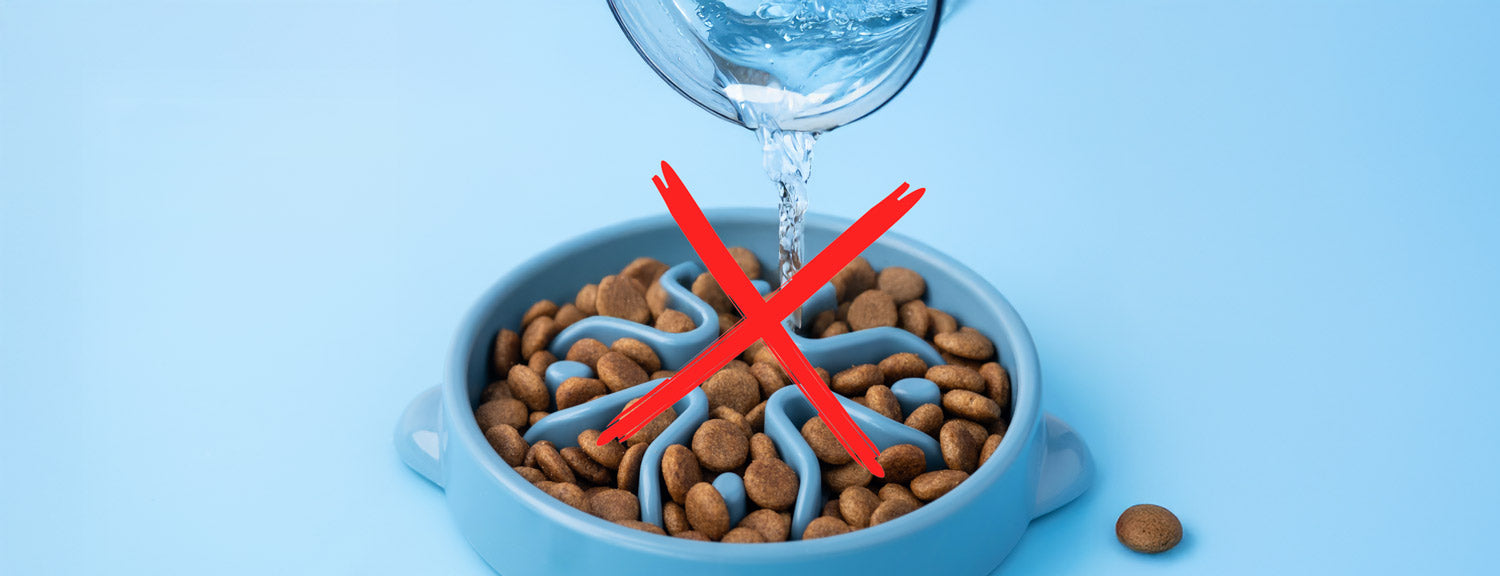
Should You Add Water to Your Dog’s Kibble? Here’s What the Science Says
August 14, 2025 7 min read
Should you add water to your dog’s kibble? Discover the science-backed pros, cons, and better alternatives like bone broth and fresh food to improve hydration, digestion, and overall canine health...
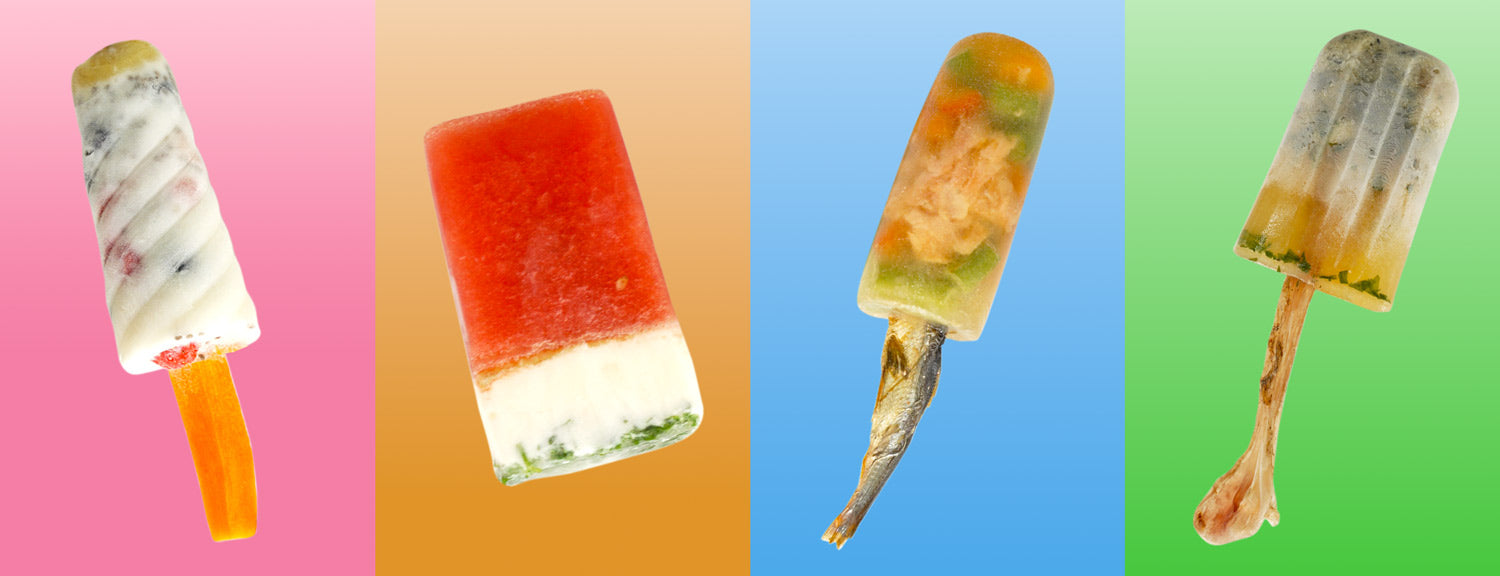
DIY Frozen Dog Treats Your Pup Will Love
June 27, 2025 4 min read
Summer heat can be dangerous for dogs, making hydration more important than ever. Learn how to spot signs of dehydration, boost your pup’s water intake, and create fun, frozen recipes to keep them happy and healthy all season long.
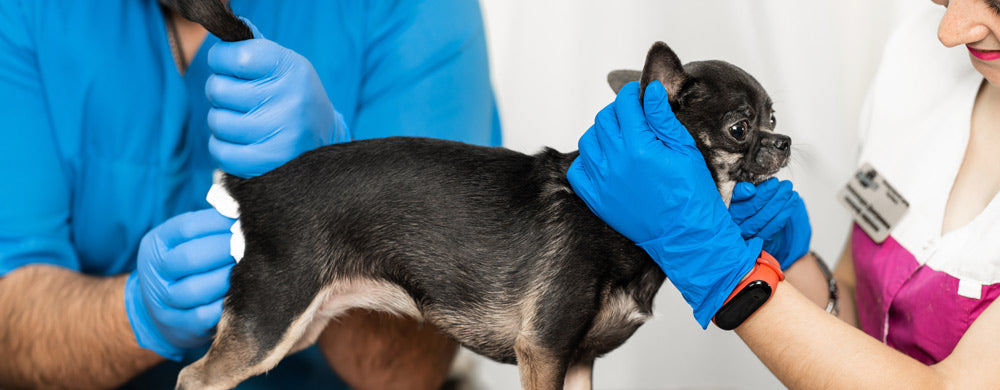
Why Is My Dog Scooting? Common Causes and How Diet Can Help
May 09, 2025 4 min read
If your dog is scooting or smells fishy, it could be due to blocked or irritated anal glands. Learn what causes blocked anal glands, which dogs are most at risk, and how simple dietary changes—like adding fibre and anti-inflammatory nutrients—can help prevent recurring problems.



